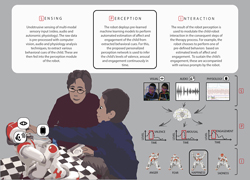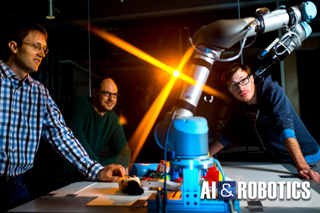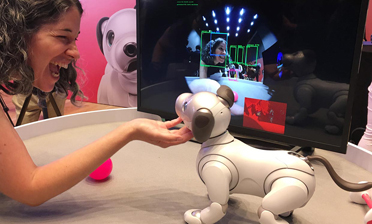'Ambidextrous' robots could dramatically speed e-commerce
When UC Berkeley researchers trained reward functions for a parallel-jaw gripper and a suction cup gripper on a two-armed robot, it picked up a variety of objects with 95 percent reliability.
When UC Berkeley researchers trained reward functions for a parallel-jaw gripper and a suction cup gripper on a two-armed robot, it picked up a variety of objects with 95 percent reliability. (Photo: Adriel Olmos, UC Berkeley)
In a new paper published Wednesday, January 16, in Science Robotics, engineers at the University of California, Berkeley build on 35 years of research to present new algorithms to compute robust robot pick points, enabling robot grasping of a diverse range of products without training.
“Any single gripper cannot handle all objects,” said Jeff Mahler, a postdoctoral researcher at UC Berkeley and lead author of the paper. “For example, a suction cup cannot create a seal on porous objects such as clothing, and parallel-jaw grippers may not be able to reach both sides of some tools and toys. ‘Ambidextrous’ robots offer greater diversity.”
Mahler works in the lab of Ken Goldberg, a UC Berkeley professor with joint appointments in the Department of Electrical Engineering and Computer Sciences and the Department of Industrial Engineering and Operations Research.
Mahler works in the lab of Ken Goldberg, a UC Berkeley professor with joint appointments in the Department of Electrical Engineering and Computer Sciences and the Department of Industrial Engineering and Operations Research.
The robotic systems used in most e-commerce fulfillment centers currently rely on suction grippers, which can limit the range of objects they can grasp. The UC Berkeley paper introduces an “ambidextrous” approach that addresses these limitations by being compatible with a variety of gripper types. The approach introduces a common framework based on a common “reward function” for each gripper type that quantifies the probability that each gripper will succeed. This allows the system to rapidly decide which gripper to use for each situation. To compute the reward function for each gripper, the paper describes a process for learning reward functions by training on large synthetic datasets rapidly generated using structured domain randomization and analytic models of sensors and the physics and geometry of each gripper.
When the researchers trained reward functions for a parallel-jaw gripper and a suction cup gripper on a two-armed robot, they found that their system cleared bins with up to 25 previously unseen objects at a rate of over 300 picks per hour with 95 percent reliability.
“When you are in a warehouse putting together packages for delivery, objects vary considerably,” said Goldberg. “We need a variety of grippers to handle a variety of objects.”
Article Source : Berkeley Department of Engineering 01/16/2019
Keywords:
- #ambidextrous, #innovation, #robots, #robotic, #berkeley, #engineering| Tweet |





